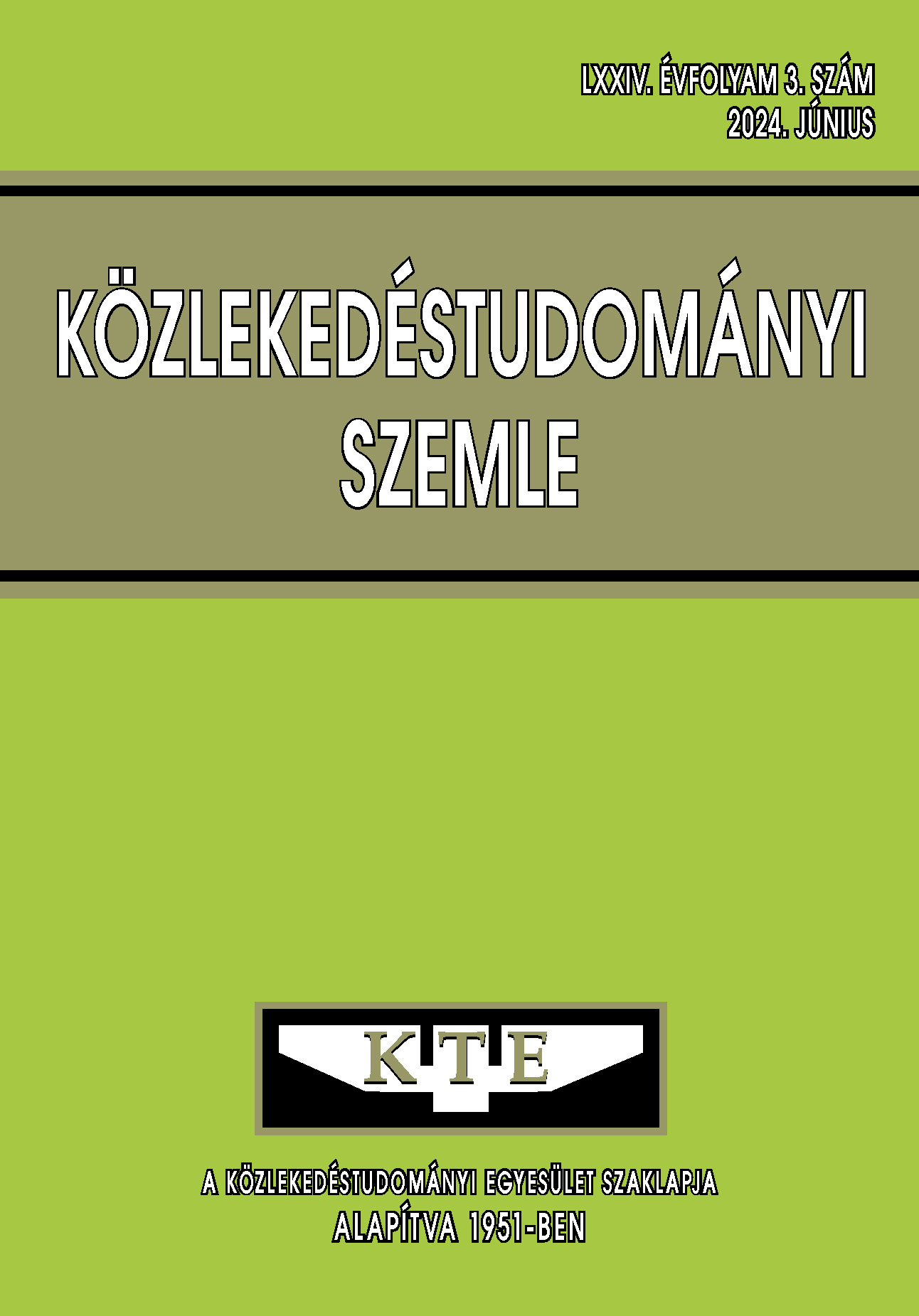Seat belt use of driver and passenger in car 2023
Abstract
Road safety performance indicators show the effectiveness of action taken to improve road safety. The indicators describe the behaviour of drivers, thus showing the everyday attitudes and behaviour of road users. In 2023, the CTI measured the trend of the indicators on the national road network using a new methodology. The measurements were conducted at predefined road locations (motorways: 17 locations, outlying areas: 33 locations, inland areas: 20 locations). We evaluated seat belt use by drivers and passengers of passenger vehicles
nationally, by region and by road type. The data showed that there is significant variation in road user behaviour between road types and regions.
References
Lévai Zsolt (2019): Közlekedésbiztonság, Dialóg Campus Kiadó, Budapest, ISBN: 978-963-531-012-8
Holló Péter – Eksler, Vojtech – Zukowska, Joanna (2010): Road safety performance indicators and their explanatory value: A critical view based on the experience of Central European countries, Safety Science 48:9, 1142–1150. DOI: https://doi.org/dw7cgb
Evans, Leonard (1996): Safety-belt effectiveness: The influence of crash severity and selective recruitment, Accident Analysis & Prevention, 28:4, 423-433, DOI: https://doi.org/fftv49
Vivoda, Jonathon M. – Eby, David W. (2011): Handbook of Traffic Psychology, Academic Press, ISBN 9780123819840
Febres, Juan Diego - García-Herrero, Susana - Herrera, Sixto – Gutiérrez, J.M. – López-García, J.R. – Mariscal, Miguel A. (2020):. Influence of seat-belt use on the severity of injury in traffic accidents. European Transport Research Review, 12, 9. DOI: https://doi.org/mssz
Sivak, Michael – Schoettle, Brandon – Rupp, Jonathan (2010): Survival in Fatal Road Crashes: Body Mass Index, Gender, and Safety Belt Use, Traffic Injury Prevention, 11:1, 66-68. DOI: https://doi.org/dptsdm
McCratt, Anne T. – Northrup, Veronika Shabanova (2004): Factors related to seat belt use among fatally injured teenage drivers, Journal of Safety Research, 35:1, 29-38. DOI: https://doi.org/fb26nc
WHO (2011): Existence of a national seatbelt law, National Legislation, Seat-belt,
Lorini, C. – Pieralli, F. – Mersi, A. - Cecconi, R. – Garofalo, G. – Santini, M. G. – Bonaccorsi, G. (2014): Comparison of self-reported and observed prevalence of safety belt and helmet use in Florence, Ann Ig. 26:6, 499-506. DOI: https://doi.org/mss2
Borghebani, Rohallah - Dehghani, Seyyedeh Leila – Khanjani, Narges (2013): Safety belt use and its related factors: a study from Kerman, Iran, Payesh 2013; 12:2, 159-165.
Şimşekoğlu, Özlem - Lajunen Timo (2008): Social psychology of seat belt use: A comparison of theory of planned behavior and health belief model, Transportation Research Part F: Traffic Psychology and Behaviour, 11:3, 181-191. DOI: https://doi.org/c7zcnj
Bragg, Barry W. E. – Finn, Peter (1985): Influence of safety belt usage on perception of the risk of an accident, Accident Analysis & Prevention, 17:1, 15-23. DOI: https://doi.org/ch4crb
Calisir, Fethi – Lehto, Mark R. (2002): Young drivers’ decision making and safety belt use, Accident Analysis & Prevention, 34: 6, 793-805. DOI: https://doi.org/bgkpmr
Van den Broek, B. – Aarts, L. - Silverans, P. (2022): Baseline report on the KPI Safety belt and Child restraint systems. Baseline project, Brussels: Vias institute
Yannis, G. – Laiou, A. – Vardaki, S. – Papadimitriou, E. – Dragomanovits, A. – Kanellaidis, G. (2011): Parameters affecting seat belt use in Greece, International Journal of Injury Control and Safety Promotion, 18:3, 189-197. DOI: https://doi.org/c85fmh
Holló Péter (2020): Biztonságiöv-viselési arányok Magyarországonés külföldön. Közlekedéstudományi Szemle, 70(6), 59–64. DOI: https://doi.org/j9xp
Articles published electronically are open access (OJS), freely available online and can be downloaded. Authors of articles are not charged any publication or publishing costs (APC). Users have the right to read, download, copy, print, and search the articles, or share the full text with a link.
Authors must declare that their submission has not been previously published in another journal, that financial support has been acknowledged, and that the list of references is complete and accurate, including specification of URLs and DOIs (if available). When submitting a draft article, each author approves the submitted version. Authors guarantee that the article is their original work. Authors are required to participate in the peer review process, follow the advice of reviewers, meet the prescribed deadlines, and, if any, withdraw the submission or correct errors.
All submitted articles are subject to peer review, where the editors request an independent evaluation from at least one expert, ensuring that the reviewer(s) have no conflicts of interest with the authors. The final decision is made by the Editor-in-Chief, who takes into account the evaluations and the suggestions of the editors. The editors and reviewers treat the submission confidentially.
The publisher and editors are committed to maintaining high ethical standards and to preventing publications that involve research misconduct. They follow the COPE guidelines on such ethical issues.
The authors retain copyright and grant the journal the right of first publication under the Creative Commons License (https://creativecommons.org/licenses/by-nc-nd/4.0), which allows others to share the work, while acknowledging the authorship of the work and the first publication in the journal.
The journal archives all published articles, and the journal's owner, the Hungarian Society of Transportation Sciences, will continue to operate the database even if the journal ceases to be published.















